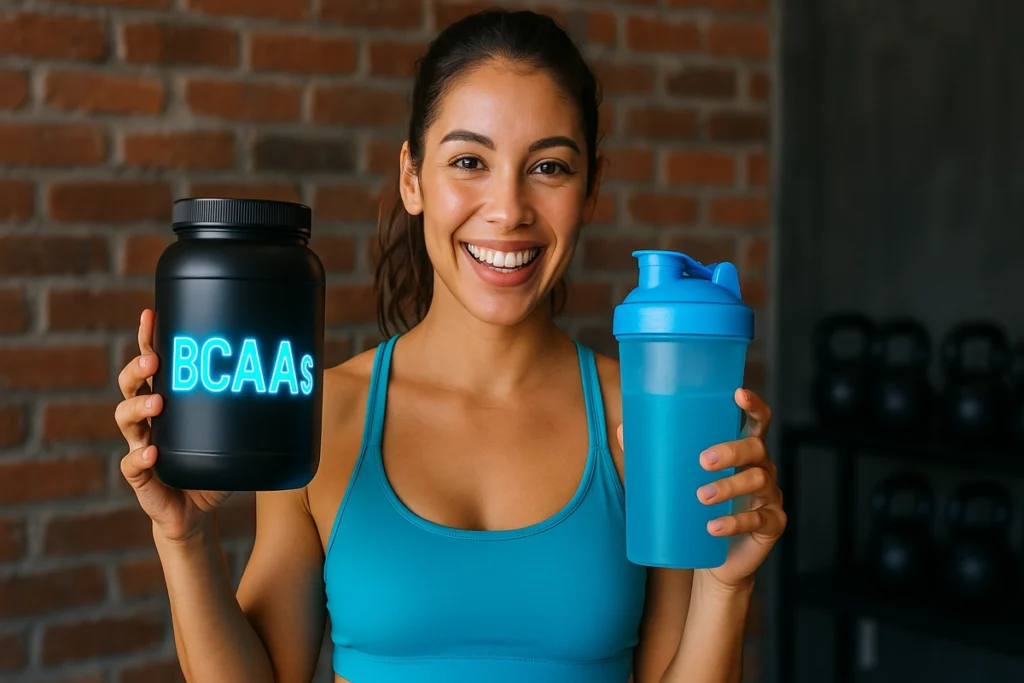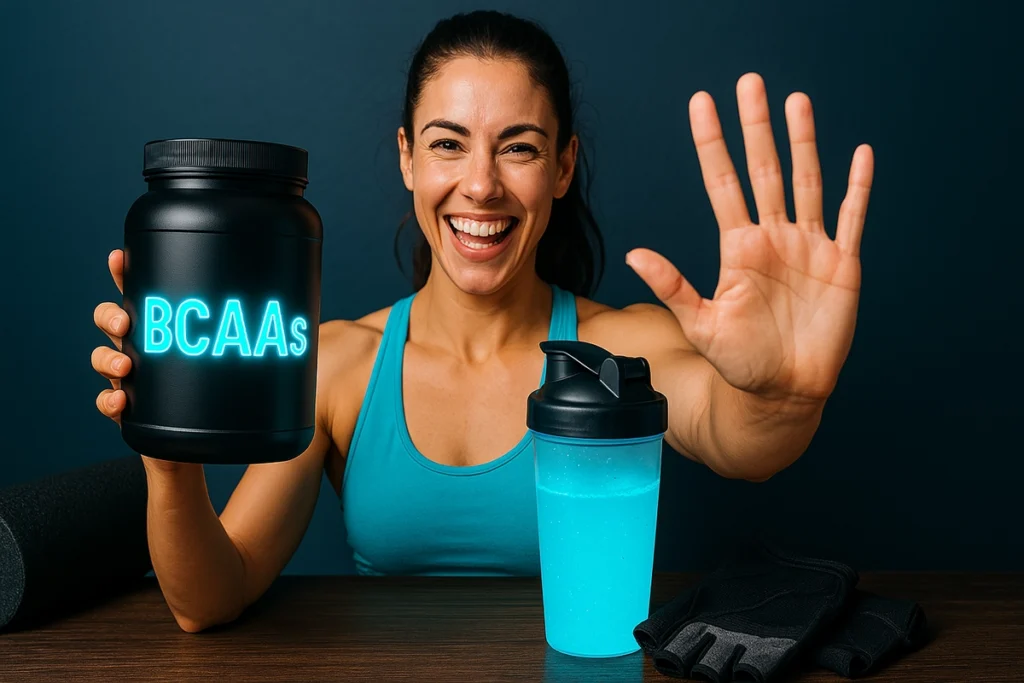If you’re working hard in the gym, you know that muscle recovery is everything. And when it comes to fast, efficient recovery, BCAAs often come up in the conversation. But let’s cut the fluff.
Taking BCAAs right before or during your training helps reduce muscle breakdown, lessens post-workout soreness, and keeps your energy levels stable—especially when you train fasted, are in a calorie deficit, or doing high-volume sessions.
I’ve tested this myself and coached dozens of clients through different training phases using BCAAs strategically. The results? Noticeable improvements in recovery, stamina, and training consistency.
Let me walk you through what works—not just in theory—but in real training, real clients, real sweat.
Table of contents
Why Timing Matters for BCAAs

BCAAs—leucine, isoleucine, and valine—are like quick-access fuel for your muscles. They’re rapidly absorbed and help:
- Decrease muscle protein breakdown
- Reduce delayed onset muscle soreness (DOMS)
- Improve training endurance and recovery
And timing matters.
You want these aminos in your bloodstream while your muscles are under stress—not hours later when the damage is already done.
💡 Real Talk:
I remember training a client, Andre from Brazil, who was struggling with recovery during a lean bulk. We added BCAAs 15 minutes before his training. After a week, he told me, “Man, I don’t feel wrecked anymore the next day. I can actually hit legs twice a week now.” That’s the kind of edge BCAAs can give when timed right.
Pre, Intra, or Post-Workout?

Pre-Workout (My Personal Favorite)
Taking BCAAs 10–15 minutes before lifting primes your muscles and helps protect them from breakdown.
I do this every morning when I train fasted. One of the biggest benefits? Less soreness, even after heavy squats or deadlifts.
Example: During a summer shred phase, I trained early mornings on an empty stomach. BCAAs kept me from crashing and helped preserve muscle—even while dropping body fat.
Intra-Workout
Perfect for longer sessions or intense training blocks. I recommend sipping BCAAs mixed with water to stay fueled and hydrated.
Client Story: Aya from Japan, a bikini competitor I coached, trained in the evenings after long workdays. She’d often fade mid-session. After we added intra-workout BCAAs, she told me she felt stronger through her final sets and needed less time to recover between sessions.
Post-Workout
Not a bad time—but not as crucial if you’ve already taken them around your workout or had a proper post-workout shake. Think of this as bonus recovery, not the main meal.
How Much BCAA Should You Take?
Stick with 5–10g per session.
I personally use 7–10g depending on the day. Heavier training = higher end of that range. Look for a 2:1:1 ratio (Leucine:Isoleucine:Valine). That’s the sweet spot I’ve seen work for myself and clients across all fitness levels.
Pro Tip: Don’t overdo it. More isn’t better. Consistency and timing matter way more than megadosing.
Who Actually Benefits from BCAAs?

Here’s where honest coaching comes in.
Not everyone needs BCAAs if they’re already getting high-quality protein from food. But based on my experience, they’re incredibly useful for:
- Fasted training
- Cutting phases
- Athletes in calorie deficits
- Back-to-back training days
- Low-protein or plant-based diets
Story: Zayd from Dubai, a client I trained during Ramadan, couldn’t eat during daylight. We added BCAAs right before his post-sunset workout. Despite fasting all day, he maintained muscle mass and felt less drained. That’s strategic supplementation at work.
My Recommended BCAA Brands (Tried & Trusted)
Not all BCAA supplements are equal. I’ve tested dozens—some work, some are sugar bombs in disguise.
Here are my top picks:
- Xtend BCAAs by Scivation – includes electrolytes, amazing taste, ideal for long sessions or hot climates.
- Optimum Nutrition BCAA 5000 – clean, simple, affordable. No gimmicks, just what works.
Real Talk: When coaching Elena from Italy, a first-time bikini competitor, we used Xtend BCAAs to help her stay energized while cutting. She crushed her prep and came in lean and recovered.
BCAA Myths I See Too Often

🚫 Myth 1: BCAAs replace protein.
Nope. They’re only 3 of the 9 essential amino acids. You still need full protein (via food or shakes) to build and repair muscle fully.
Example: Elena thought she could sip BCAAs instead of eating. Once we corrected that and added real meals, her strength, mood, and body composition improved fast.
🚫 Myth 2: More BCAAs = more muscle.
Nope again. This isn’t pre-workout. Stick to the dose, time it well, and let your training and diet do the heavy lifting.
Final Word from a Fitness Trainer: When to Take BCAAs for Recovery
If you’re training hard and want to stay consistent, BCAAs can be your recovery insurance policy—especially if you:
- Train fasted or cut calories
- Do multiple sessions per week
- Want less soreness and better energy during workouts
- Best Time to Take BCAAs: Before or During Your Workout
- Best People to Use BCAAs: Anyone pushing limits with training, fasting, or dieting
- Best Way to Use BCAAs: 5–10g, 2:1:1 ratio, consistently and with intention
Train smart. Recover harder. Respect the grind.
Stay consistent,
– Hossein, Fitness Coach @ MuscleZeus
Want help picking the right BCAA for your goals? Drop a comment or reach out.



Leave a Reply